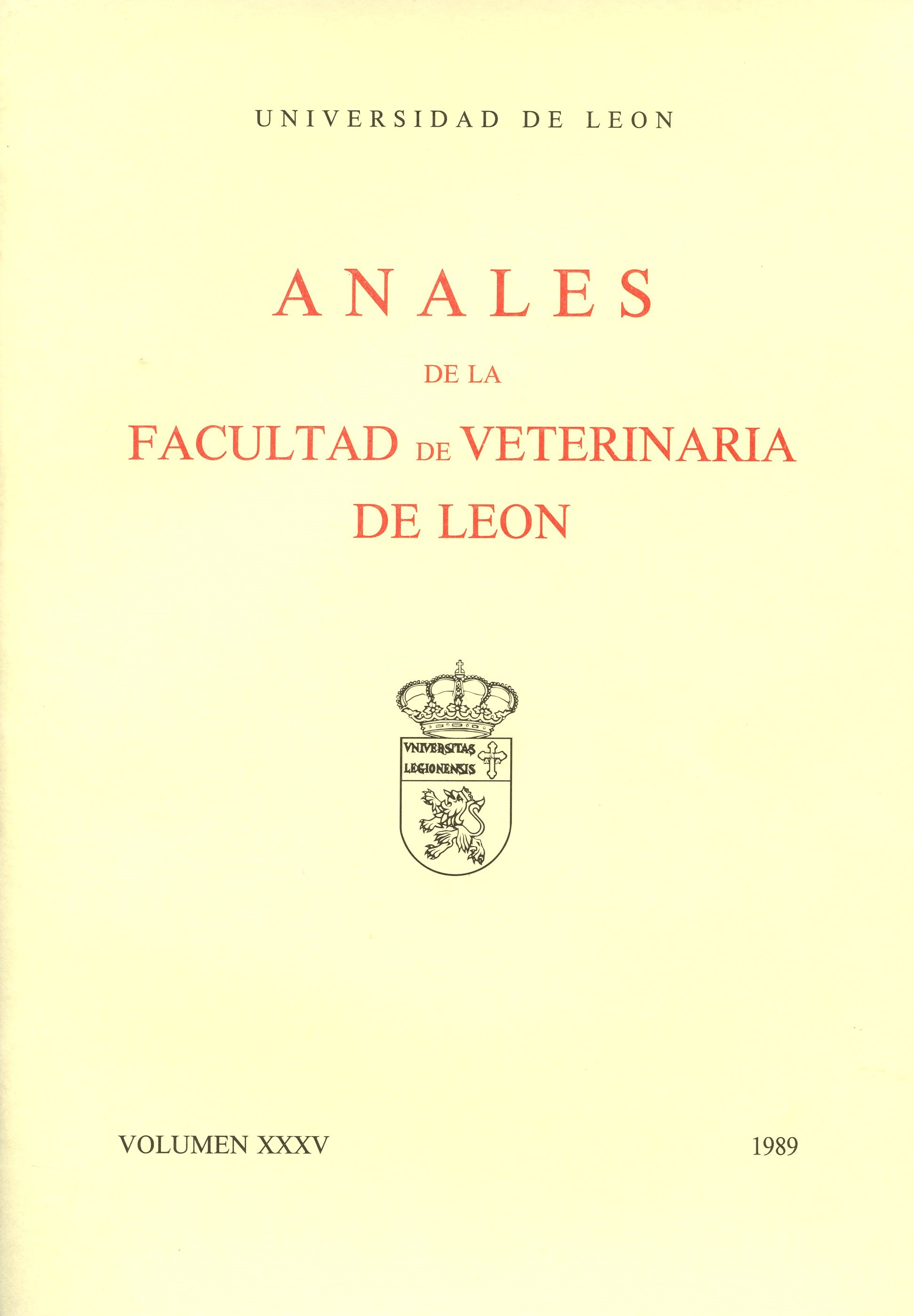The effect of the botanical composition of hays and level of intake on digestibility and rate of passage of digesta
DOI:
https://doi.org/10.18002/analesdeveterinaria.v35.7902Keywords:
Hay, level of intake, rate of passageAbstract
Sixteen mature ewes were used to investigate the effects of type of hay and level of intake on digestibility and rate of passage. Two levels of intake -maintenance (NB) and 90% of the "ad libitum" intake (NA)- and two hays -alfalfa hay (HA) and grass hay (HG)- were compared. Chromium-mordanted hay (ground through a 2 mm. screen) was used as marker. Apparent digestibility coefficients for organic matter (DMO) and neutral (DFND) and acid detergent fibre (DFAD) were not affected (P > 0.05) by level of intake. DFND and DFAD were higher (P < 0.05) for sheep fed grass hay than for those fed alfalfa hay. Digestibility of crude protein (DPB) was greater (P < 0.05) for sheep fed alfalfa hay than for those fed grass hay. The retention time of marker in the reticulo-rumen was lower (P < 0.05) for the higher level of intake (NA), but the retention time in the post-ruminal tract was essentially identical for both levels (NA and NB). A tendency (P < 0,10) for a greater total mean retention time of marker (TMRT) in the digestive tract (47,14 and 56,48 h. for the NA and NB level intake) was found.Downloads
Download data is not yet available.
Downloads
Published
1989-01-02
Issue
Section
Research papers
License
Copyright (c) 1989 María Dolores Carro Travieso, Secundino López Puente, Jesús Salvador González Álvarez, Francisco Javier Ovejero Martínez

This work is licensed under a Creative Commons Attribution-NonCommercial-ShareAlike 4.0 International License.
Los autores que publican en esta revista están de acuerdo con los siguientes términos:
- Los autores ceden de forma no exclusiva los derechos de explotación (reproducción, distribución, comunicación pública, transformación) a la Universidad de León, por lo que pueden establecer, por separado, acuerdos adicionales para la distribución no exclusiva de la versión de la obra publicada en la revista (por ejemplo, alojarlo en un repositorio institucional o publicarlo en un libro), con un reconocimiento de su publicación inicial en esta revista.
- Este trabajo se encuentra bajo la Creative Commons Attribution-NonCommercial-ShareAlike 4.0 International License. Puede consultarse desde aquí la versión informativa y el texto legal de la licencia.
- Se permite y se anima a los autores a difundir electrónicamente las versiones pre-print (versión antes de ser evaluada) y/o post-print (versión evaluada y aceptada para su publicación) de sus obras antes de su publicación, ya que favorece su circulación y difusión más temprana y con ello un posible aumento en su citación y alcance entre la comunidad académica.







